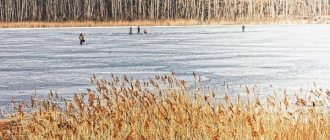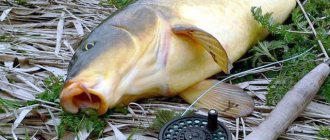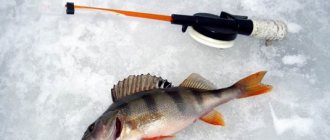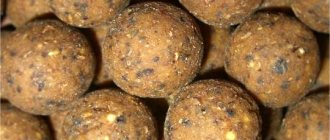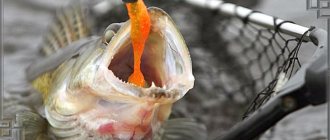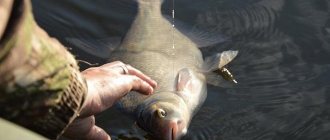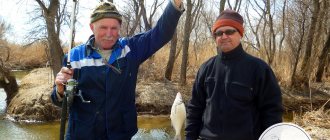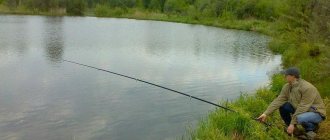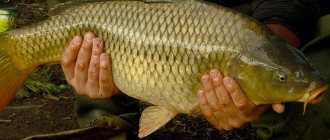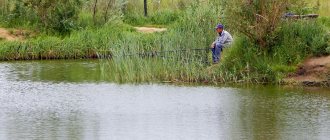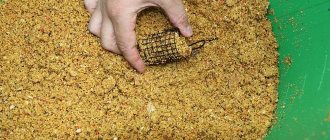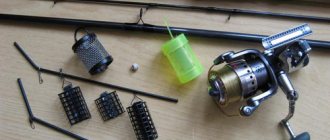Despite the fact that in the fishing world there are conventional divisions into feeders or carp anglers, amateurs or athletes, etc. But carp was, is and will be for centuries the most desirable fish for any person who is not indifferent to fishing. In truth, fighting qualities, serious weight and sometimes simply enormous size attract the mind of any fisherman.
In our previous articles, we wrote about a variety of methods for catching carp, about bait, about finding a suitable place to start fishing, but we have not yet considered the question: how does atmospheric pressure affect fish? What weather factors (depending on the season of the year) have a significant impact on the feeding behavior of carp ?
A more or less knowledgeable person will immediately agree that the bite of this fish is a very unpredictable thing, and very often defies the logic of things. Unfortunately, we humans (unlike fish) do not always fully understand how to determine with maximum accuracy the most important nuances that affect the appetite of carp.
Let's say we have already thoroughly figured out how to properly scout places for carp fishing , how and what to feed it with, and we even know that there is a lot of this fish in a particular body of water. But that's not all! Since there are other equally important “external” factors that seriously affect the intensity of fish biting.
“External” factors influencing carp biting
So what are these factors? For several decades now, experienced world-famous carp anglers have been asking us to take into account: the time of year (divided into 4 seasons, and at least 2 more sub-seasons). Current weather conditions (against the background of a long-term forecast), water temperature, atmospheric pressure, geomagnetic situation and moon phases. And also not just the wind, but its clear direction, strength and temperature.
It’s clear that for an ordinary amateur fisherman all this data is not needed (except perhaps some of it), and for beginners this whole thing is a “dark forest”. And many people plan fishing not for that period - when everything will be “super”, but when the days off from work come. Naturally, we would all like to live near the best pond and go to the fishing site on the most favorable days. But life has other plans, so you have to take up your favorite hobby in your free time. So what should we do?
Spawning dates and when the best carp bite begins
Carp is a heat-loving fish , and therefore it spawns at a water temperature of at least 20 degrees. Moreover, in different reservoirs there is a different pattern and in some places it can spawn at 16-18 degrees. Many fishermen associate the main sign of the beginning of spawning with the flowering of wheat, which is accepted only after 3 warm weeks.
There are different conversations about fishing during spawning, but, as a rule, among novice fishermen. Experienced people know that carp’s zhor begins before spawning, two or three weeks before. Having finally woken up after winter, he tries to gain strength, and during spawning, his appetite sharply decreases. During the 2–3 weeks that spawning occurs, it is possible to capture individual specimens, mainly males. And the best bite begins about a month after spawning and lasts about 3 weeks.
For avid fishermen, carp fishing is interesting not only because its meat is delicious in its own way. For many, fishing is a kind of duel that has been going on for centuries.
Regional carp fishing forums – tip #1
The ideal option is to definitely find a fishing forum, specifically from your region. Not a single website or even magazines can help you accurately determine and predict the behavior of carp, as the carp fishing forum (including ours (!)). Here, many people describe not only their catches, but also many other nuances. Having carefully “monitored” them, you can already understand that on some days it is worth fishing on a nearby lake, and on others, on the contrary, it is better not to “make unnecessary movements”. Or, nevertheless, do it in order to prove to others your superiority.
How to increase your carp catch?
Mostly carp are caught using a float rod with a powerful rod. The line should be approximately 0.5 millimeters, the leash should be 0.4 millimeters. The thickness of the fishing line will depend on the size of the carp you encounter. The larger the fish, the stronger the line should be.
For carp from 1.5 to 2 kilograms, the thickness of the leash should be 0.3 millimeters ; for large fish, 10 kilograms of wood should be 0.7 millimeters thick. When catching large carp, use a thick leash made of silk or nylon. It is necessary to camouflage the fisherman in bushes or thickets, wicker shields or branches.
The sizes of the hooks depend closely on the size of the bait, but very strong (double) hooks are required. Hooks in sizes from No. 6 to No. 12 inclusive will certainly suit you.
The carp bite can be so unexpected and rapid that the fishing rod may end up in the water. If the fish likes your bait, the float will slowly sink to the bottom; this should not be missed.
There are a huge number of ways to significantly increase your catch. One of them is a bite activator. The bite activator actually attracts carp and, thanks to pheromones, stimulates the carp's appetite. Read another article on our website and you will learn how to make a bite activator with your own hands.
The most important wealth of an angler is personal experience!
Of course, valuable advice from scientific ichthyologists or carp fishing experts is very necessary for us, but the most valuable information will be the one that is based on purely personal experience. Correctly recognizing the slightest changes in the behavior of carp, knowing its habits and taste preferences in a specific body of water is only possible when you already have your own “baggage” of knowledge. Well analyzed and sorted out in the mind “on the shelves”.
You can read a lot of articles on different sites about trouble-free carp fishing, but (!) this will not be a panacea, that is, “golden” advice for any situation. Since each region of the country has its own specific nuances that affect the behavior of fish (pressure, wind, weather conditions, terrain and even phases of the moon ). And even between lakes located nearby, there can also be differences. Therefore, your own understanding of all these processes, based on analysis and many years of observation, is what will give an excellent result!
Next, we bring to your attention the main points (basics), based on which you can learn to make your own forecasts for fishing in the future.
Carp bait
- Bulk mixtures. For example: crackers, fish meal, milk powder. These mixtures are like an aromatic cloud to which the carp swim with great pleasure;
- Grain mixtures. For example: porridge, bran, corn, hemp, pellets (granulated food);
- Live food. For example: bloodworms, maggots, worms;
- Boilies. The composition of the boilie is always different. Its composition may include: dyes, cereals, starch, flavorings, flavoring additives, etc.;
- Nuts are a heavy food, but if adequate proportions are observed, the taste will be unusual, which will attract fish;
- Fruit supplements are supplements that consist of fruits.
Best atmospheric pressure for carp fishing
Let's start with the fact that any changes in atmospheric pressure (as well as its established values) have a significant impact on the behavior of fish (especially on its appetite). Nowadays, you can observe it not only using a home barometer, but also according to data (published daily) on the pages of many meteorological sites.
Although, we cannot find a better, and most importantly, reliable assistant than a home wall barometer (mentioned above). After all, as you know, most forecasts on the Internet are formed “from a flashlight”. So, back to the topic:
- if the pressure drops, then you should expect precipitation, wind or cloudiness,
- if it grows again, the weather will soon be better.
At what pressure does carp bite in summer?
During periods of persistent hot/hot weather, virtually any fish will not be active. That is why, at such periods of time, carps will bite in the morning, late evening or at night. That is, when it's cool. So, using this situation as an example, we can safely say that a decrease in atmospheric pressure “signals” to us that a cold cyclone is approaching, which means that the bite will also change. Naturally, for the better.
According to scientists - ichthyologists, for the carp family the optimal “summer” pressure (i.e., conducive to an active search for food) is either short-term - low, or gradually falling. Combined with clouds and a light breeze. However, it is worth considering that during such periods there may be sharp (!) jumps (usually accompanied by thunderstorms). This means that even within a day, our chances of getting a bite can change several times: from the highest to zero.
The best weather conditions for carp fishing
Many especially novice fishermen believe that such a concept does not exist and that it is enough just to choose the right bait and fishing spot for carp. This is due to the fact that it is difficult to imagine what the ideal weather should be for catching this fish. There may always be a factor present that, in the opinion of the fisherman, negatively affects the bite, for example, an advancing anticyclone and lack of wind, cold snap, pressure drop, etc.
The most important thing to remember is that carp does not tolerate sudden changes in weather conditions. They can more easily tolerate prolonged heat than sudden warming followed by worsening weather (lower temperatures, strong/gusty winds, heavy rains).
The optimal conditions for fishing in each period of the year will be different, for example, a light but cool wind in spring or autumn will negatively affect the activity of carp, but in summer, on the contrary, the activity of the fish will increase. Therefore, it is impossible to say unequivocally what weather is considered the most favorable for carp; everything will depend on the individual characteristics of the reservoir, as well as the time of year.
Source: velesovik.ru
The influence of wind on the feeding behavior of carp
One of the main factors that also seriously influences the bite is the wind. And the key points here are not only its strength and direction (which we will discuss in detail later in this article), but also many other nuances. Namely: the wind is capable of cooling or, conversely, heating the temperature layers of water. Enrich it with useful oxygen, raise the level of a reservoir/pond or lake, move food and “garbage” at the bottom, etc.
To broaden your horizons, you can read the article from Jim Gibbinson: “ How does wind affect carp fishing ?”
As a rule, experienced carp anglers know from “A” to “Z” all the features of nearby bodies of water, including the direction of the wind. With one of them (for example, the northeast), the bite literally “cuts off”; with the other (for example, the southwest), the situation changes radically for the better. It is only important that the wind force be insignificant (up to 10 meters per second), since with stormy or gusty air currents (up to 20 meters per second), it is clear that the carp will no longer be willing to feed.
The next important point is the wind temperature, which very often depends on its direction. Therefore, a cool northern breeze on hot summer days significantly increases our chances of catching fish. Equally, southern warm air currents in the cold seasons of the year (warming up the water) contribute to the manifestation of carp activity. In addition, it is worth considering that prolonged winds (“blowing” for several days in a row) are capable of “moving” the main part of the food supply at the bottom of the reservoir (except for the deepest holes).
The influence of precipitation on carp activity
You can catch carp in different weather conditions, especially if the process takes place in the summer, when warm days can be replaced by heavy rains and thunderstorms. Fishing success will depend on how aware the angler is of how precipitation affects the behavior of carp. Please note that the opinion that carp can be caught well before and after rain is incorrect; it is necessary to take into account:
- duration and volume of precipitation;
- weather conditions before precipitation;
- season.
The effect of precipitation on carp activity will always be different, for example:
• If the weather was cool before the rain, then you should not count on a good catch both before and after the rain. • If rain comes instead of prolonged heat, then the activity of carp increases sharply. • Heavy and prolonged precipitation will negatively affect fish activity as it causes a sharp drop in temperature. • Heavy, but not prolonged rain will have a beneficial effect on carp biting. After such rain, carp can often be found in the coastal zone, where it will feed on food washed away from the shore.
Ideal weather for carp fishing
The best weather for carp fishing is considered to be stable, good weather with normal atmospheric pressure for your region. By the way, it is calculated depending on the height of your area above ocean level. Sudden weather changes make carp very nervous. During such periods, the bite stops completely. Although, during abnormal summer heat (which we wrote about above), the carp family, on the contrary, becomes active. But, in general, the most suitable weather for carp fishing depends on the season (i.e. time of year).
For example, for the summer months one can name such signs of “catchable” weather as a light moderate breeze, cloudiness (both variable and complete), perhaps even “mushroom” rains or short thunderstorms. An interesting fact is that carp begin to bite worse (or better) even before the weather changes in reality: a day or even several hours in advance. That is why it is very important to study forecasts for several days in advance in order to assess all the chances of success. And maybe don’t waste time, but put off fishing for another time.
In what weather does carp bite better?
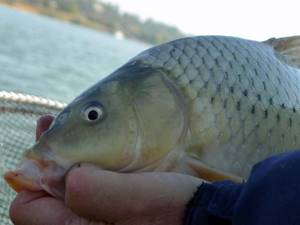
Under what weather conditions is there a greater chance that a carp will bite?
- Strong wind.
If the reservoir is large enough, then in a squally wind you will definitely catch a carp. The water in the reservoir will become cloudy, and this is another plus in your favor;
- Constant pressure.
The normal atmospheric pressure when fishing for carp is constantly low or constantly high atmospheric pressure;
- Rain and thunderstorm.
Here again the turbidity of the reservoir plays a role. Those who fish close to the shore will often be in for a pleasant surprise in the form of carp;
- Fog.
When the fog clears, the fish will bite;
- Full moon.
It is best to fish on a “day water” such as a lake.
Here you will find the answer to the question, in what wind does the fish not bite?
In conclusion
In summer, carp have a good appetite both day and night (moreover, sometimes night bites, given elevated temperatures, are even better than daytime bites). In cold seasons, the best option would be fishing during daylight hours. Some carp anglers even take into account the phases of the moon, since it is believed that when it “grows”, things will go better. However, the most important factors, sometimes immediately influencing the bite, are: pressure, wind and weather changes. And, of course, our valuable experience! Thanks to which, you can plan a good fishing trip or find a solution on how to get out of even the most difficult situations “without losses.”
Publication author
offline for 3 months
What to use to catch carp in spring
Every fisherman has his own tricks when catching any fish, and carp is no exception. In the classic version, a plug, a match and a regular float rod can be used. For bottom fishing, the leader is the feeder. Read more about carp fishing with a feeder here.
Of course, different equipment is used for different conditions. They are simply collected, and, despite the intricate names, experienced fishermen know almost everything about them.
- Safe clip. One of the popular options for carp equipment used for “hunting” for large fish in reed thickets, where carp usually like to bask in early spring. The idea is simple to the point of banality, and the name is justified by the fact that with a dead grip, the load will come unfastened, saving the fish and equipment.
- Helicopter. This is a well-known option for most carp anglers, used after the ice has completely disappeared from the reservoir. There are several varieties of such equipment, for example, using PVA bags for long casting. Read more about this and other feeder equipment.
- Chod. It is used when fishing for carp on a muddy bottom, and in algae, when the still half-asleep fish does not rise to the surface in search of food. Here simple baits will not be entirely visible, and when the sinker is immersed in the silt, the hook with the bait will remain at the top.
